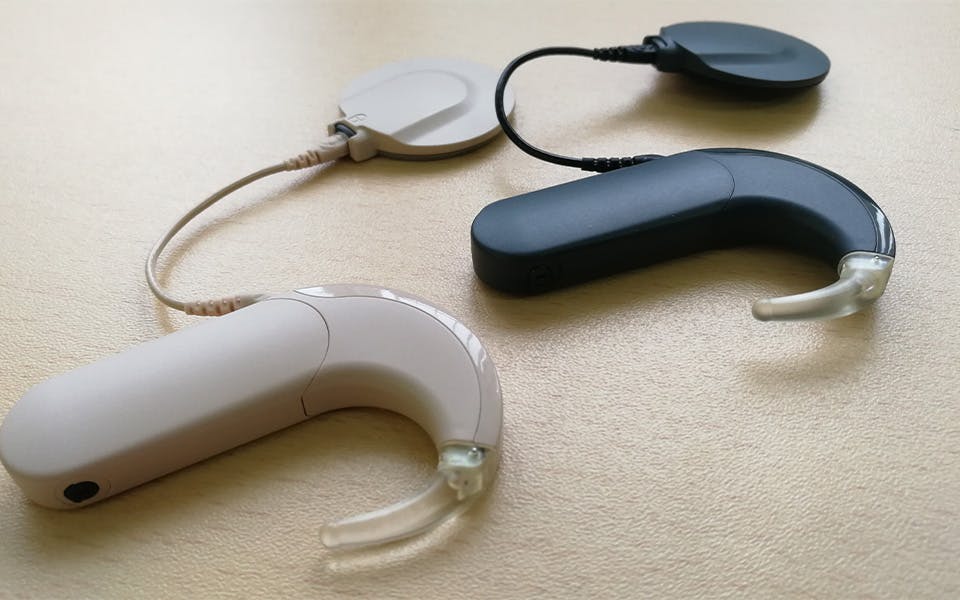On the surface, cochlear implants and hearing aids serve a similar purpose. Both devices improve sound interpretation and speech recognition for people with sensorineural hearing loss. But that’s where their similarities end.
How They Work
Hearing aids are inserted into the ear canal to amplify sound before it reaches the inner ear. Each device has a mic, an electronic component to process and amplify sound, a speaker and a battery.
A hearing specialist adjusts hearing aids to interpret specific frequencies. The inner ear receives sounds, converts them into electrical impulses and sends them to the brain for interpretation. Hearing aids are best for people with mild to moderate hearing loss.
Cochlear implants are surgically implanted devices with internal and external components. The external piece has a mic, speech processor, transmitter and wires that link them to a receiver under the skin.
Electrodes are implanted in the mastoid bone behind the ear to bypass the damaged inner ear and send electrical stimuli to the auditory nerve. Those devices are usually used by people with moderate to profound hearing loss.
Evaluation Process
Usually, you must complete a hearing evaluation from a licensed audiologist or hearing specialist to get hearing aids. Hearing tests are non-invasive procedures that require the patient to identify sounds through a set of headphones.
Qualifying for cochlear implants is a much more complex process. Medical exams are conducted to determine the physical wellness of the ear. Surgical candidates are usually evaluated by an audiologist, otolaryngologist, a speech-language pathologist, and, sometimes, a psychologist. The devices are implanted during a two- to four-hour procedure under general anesthesia.
The Adjustment Period
It can take several weeks to adjust to hearing aids, depending on the degree of hearing loss and the type of devices.
Getting used to cochlear implants can take six to 12 months. After the internal element is implanted, the patient must wait until the surgical site heals before being fitted for the external component. Afterward, therapy and aural rehabilitation will help the ear adjust to this new way of hearing.
A Difference in Expense
Hearing aids cost $1,000 to $5,000 per device. Some insurance plans offer hearing aid coverage. Medicare may cover some costs, but Medicaid coverage varies by state.
Cochlear implants cost about $60,000 per implant, but most insurance plans offer coverage options. They’re also covered by Medicare, Medicaid and VA benefits.
At Hearing Associates, our expert team is committed to helping you find the proper hearing aids for your specific needs. Call 888.760.2032 or contact us online to schedule an appointment.


